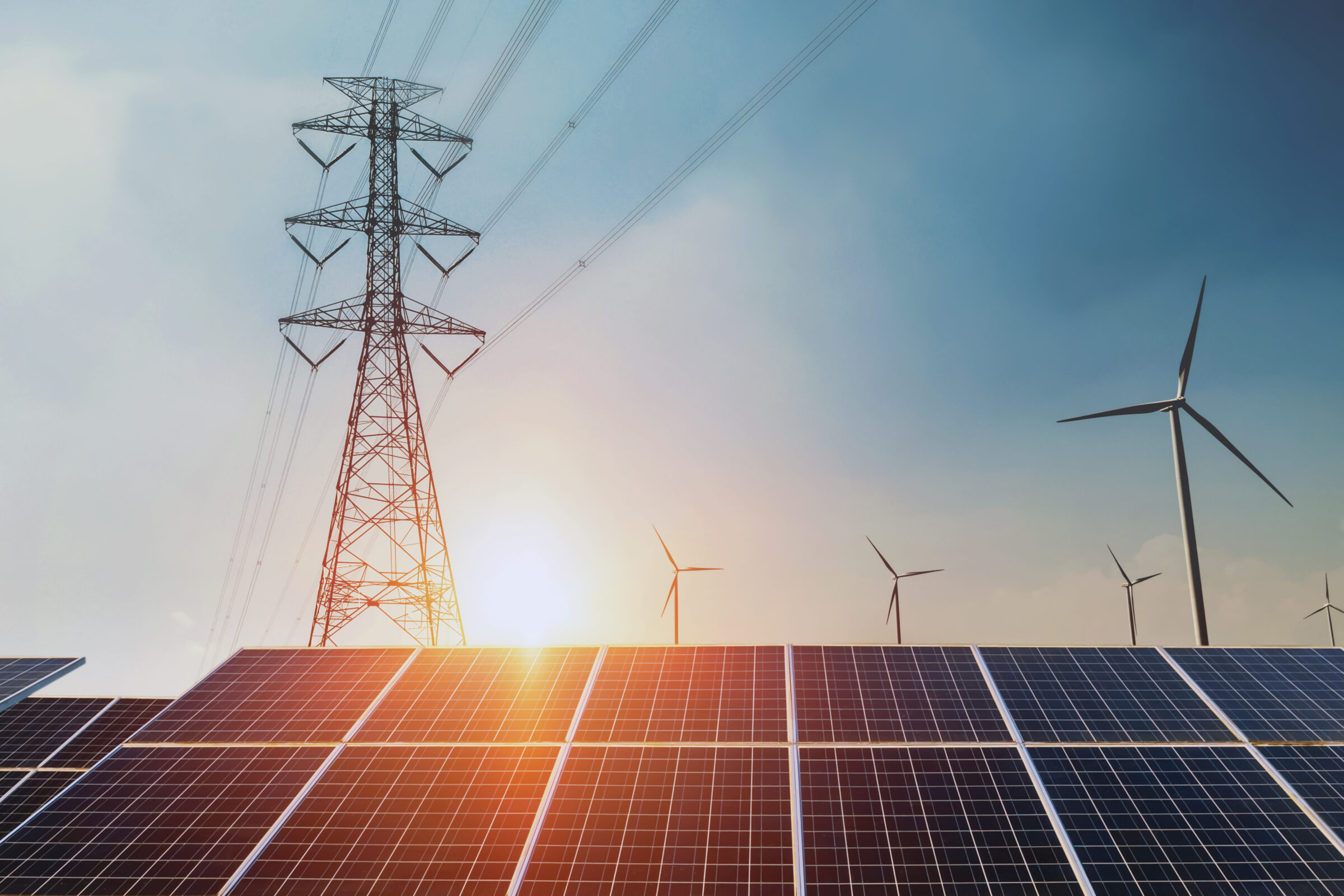Expanding Transmission Capacity Between MISO and PJM Would Save Consumers Billions of Dollars
WASHINGTON, D.C. – Consumers are paying billions of dollars a year due to transmission constraints between the Mid-Atlantic and Midwestern grid regions, and those costs are expected to increase with decarbonization and electrification efforts, according to a new report released today from the American Council on Renewable Energy (ACORE) and Grid Strategies.
The analysis, Billions in Benefits: A Path for Expanding Transmission between MISO and PJM, shows how increased interregional transmission between the PJM Interconnection (PJM) and the Midcontinent Independent System Operator (MISO) can save consumers more than $15 billion by reducing the need for power plant capacity, as well as ongoing savings that can exceed $1 billion per year by allowing more affordable power to flow across a broader geographical area. The congested seam between the regions also harms reliability by limiting the ability to import power, particularly during events like Winter Storms Elliott and Uri that disrupted electricity supply and demand in one region but not the other.
“Expanded transmission ties between MISO and PJM would significantly broaden the electricity menu for consumers in both regions, diversifying what’s available and when,” said Grid Strategies Vice President and report author Michael Goggin. “Building these lines would allow consumers to tap into generators from the Dakotas to the East Coast, reducing electricity bills and improving reliability.”
The report outlines various steps the grid operators, states, the Federal Energy Regulatory Commission, and other stakeholders can take to develop more workable mechanisms for planning and paying for interregional transmission.
“Interregional transmission lines have helped save American lives during extreme weather events, yet today’s transmission planning processes do not value the added reliability they provide our grid,” said ACORE President and CEO Gregory Wetstone. “Consumers should not be forced to endure outages when study after study shows additional line capacity would help keep the lights on and reduce power costs.”
The report identifies proactive multi-value planning as the gold standard for regional planning that should also serve as the model for interregional transmission. Absent that process, MISO and PJM should improve their coordination on transmission planning.
“The U.S. Department of Energy has found that the MISO-PJM seam has the greatest need for expanded interregional transmission ties,” said American Clean Power Association (ACP) Vice President of Markets and Transmission Carrie Zalewski. “In fact, the intertie with MISO accounts for around 80% of PJM’s total need for interregional transmission. These grid operators must collaborate on the transmission planning necessary to bridge this gap, preserve reliability, and benefit millions of customers.”
“Transmission planning is happening in silos across the country, and it is costing ratepayers billions of dollars,” said Solar Energy Industries Association (SEIA) Senior Vice President of Policy Sean Gallagher. “This siloed approach to transmission planning limits resource availability during times when we need power most, jeopardizing both grid reliability and our energy security. If we want to expand transmission infrastructure and better coordinate reliability efforts, we need Congress and the Federal Energy Regulatory Commission to make interregional transmission planning a top priority.”
Billions in Benefits: A Path for Expanding Transmission between MISO and PJM was produced by ACORE and Grid Strategies in partnership with ACP and SEIA. To download a copy of the new analysis, click here.
##
About ACORE:
For more than 20 years, the American Council on Renewable Energy (ACORE) has been the nation’s premier pan-renewable nonprofit organization. ACORE unites finance, policy, and technology to accelerate the transition to a renewable energy economy. For more information, please visit www.acore.org.
Media Contacts:
Alex Hobson
Sr. Vice President, Communications
American Council on Renewable Energy
hobson@acore.org | 202.777.7584 (o) | 202.594.0706 (c)
Dylan Helms
Associate, Communications
American Council on Renewable Energy
helms@acore.org | 202.891.7868 (o) | 727.290.8804 (c)
Join leaders from across the clean energy sector.

What will our next 20 years look like? Here’s the truth: they’ll be better with ACORE at the forefront of energy policy.
Shannon Kellogg
Amazon Web Services (AWS)
